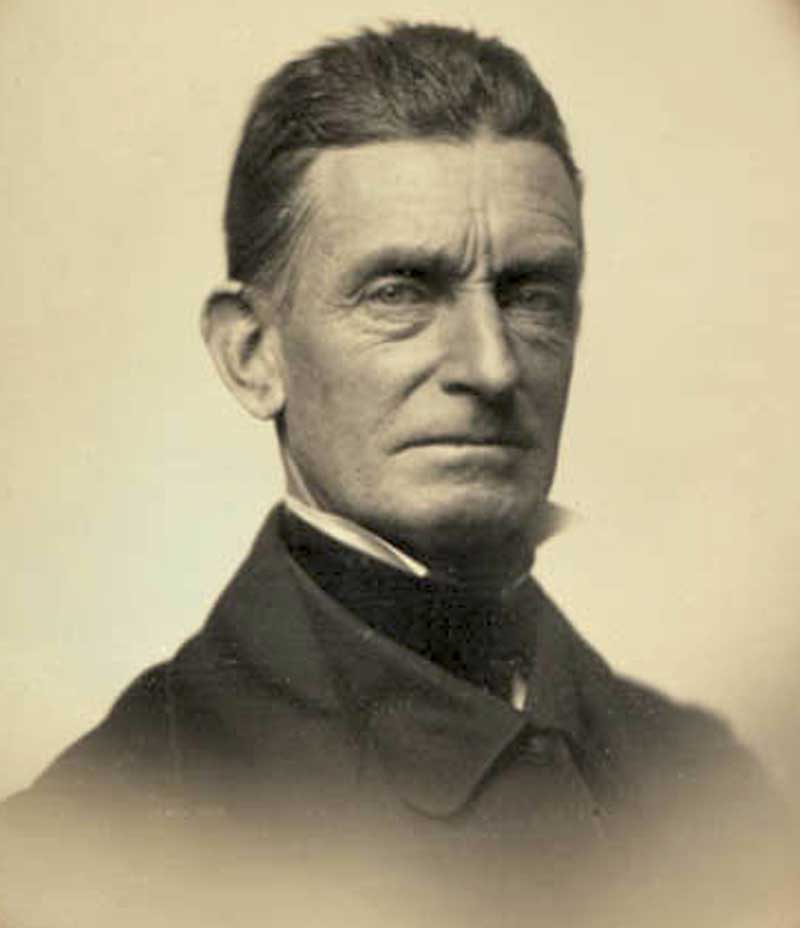Beneath the Whitewash of Civil War History

Several years ago, the guests on a popular Christian radio program tried to make the point that the pro-life movement was comparable to the abolitionist movement of the Civil War era. This is a colossal historical error resulting from a complete misunderstanding of the abolitionists and a shallow understanding of the causes and politics of that war. This inept and erroneous comparison could have been harmful to the pro-life movement, had it not been for the public ignorance of Civil War issues brought about by the thoroughly whitewashed version of the Northern cause that prevails in academic and media circles. The underside of that whitewashing was a demonization of the Southern cause and Southern culture.
It might come as a surprise to those who only know the establishment whitewash version of American history, but Abraham Lincoln was not an abolitionist, and in fact, thoroughly distrusted them. They were destructive fanatics. The abolitionists wanted to end slavery immediately with no compensation to slave owners and with little serious thought given to the hardship immediate abolition might have on both the U.S. economy and the welfare of the freed slaves. Furthermore, they actively advocated violence to free the slaves, and this was sometimes a participating advocacy of violence, murder, and encouragement of bloody slave revolts. Yet a primary characteristic of them was their constant moral virtue-signaling, usually spoken in the same breath in which they condemned Southern slaveholders and indeed the whole South as evil. This virtue-signaling and moral condemnation of the South frequently came from Northern pulpits. Perhaps a better refined term for these abolitionists would be “radical” abolitionists, because there were some who saw it differently, in purely economic terms, and these were not blazing with hatred or inclined to moral grandstanding and violence..
This second and moderate brand of abolitionionism was based on labor economics. Slave labor was cheap labor that suppressed the wages of American workers and reduced job opportunities. This situation was most crucial to Northern industrial workers, but was a common consideration held by many small farm owners in the South, who had to compete with large plantations. This was very similar to the situation that now exists in the U.S. where both legal and illegal cheap immigrant labor is suppressing American wages and job opportunities. Ironically, flooding America with cheap labor that hurts American workers is now considered a virtue by modern Democrats and cheap-labor Republicans.
Both Abraham Lincoln and Robert E. Lee were emancipationists, which was a majority position in both North and South. Only 26 percent of Southern households owned slaves, and most of them held only a few slaves. Slaves were also used extensively in raising the master’s children. Hence it was typical for slaves to enjoy near-family status. The emancipationists wanted to phase out slavery with compensation to former slave owners and some provision for building an independent future for the slaves. Lee had actually freed his family’s slaves as soon as he was convinced they were able and ready to make an independent living. Most of Lee’s slaves were freed before the war and all before the war’s end. The Bible does not condemn slavery per se as an institution but regulates it and holds both master and slave accountable for responsible conduct toward each other. (See 1 Timothy 6: 1-5 et al.) Most Southern Christians, however, preferred the emancipationist solution to slavery as the providential will of God.
There were two factions among the emancipationists. Many Northern emancipationists wanted to free the slaves and pay for their re-establishment in Africa or Panama. Lincoln and his political idol, Henry Clay, were prominent leaders in this “Colonization” plan. Henry Clay had been President of the American Colonization Society, and Lincoln was once Secretary of the Illinois branch. Many abolitionists also preferred the “Colonization” plan. Because of both personal relationships and economic reasons, Southerners generally preferred that freed slaves have the option of staying.
The term “slaveocracy” came from the British Parliament in their derogatory description of the political economics of their British West Indies colonies. It was applied frequently by Northern politicians and press in their demonization of Southern politics and fictionalization of Southern ambitions. What to do about the slavery issues was certainly a great question of the times, but “slaveocracy” was a wild exaggeration in describing Southern politics. Democrat and constitutional conservative were practically synonyms in 19th Century America. A few Southern leaders had ambitions to spread American slavery to Mexico and Cuba, but Southern politics was largely Jeffersonian—the best government is the government that governs least—while Northern politics tended to be Hamiltonian. The Republicans of Lincoln’s day wanted to make America greater by consolidating Federal power at the expense of the Constitution, including States Rights. The Radical Republicans, who were generally also abolitionists, wanted the power of Congress to dominate over both the presidential executive and the judiciary.
The theological framework of the abolitionist worldview was a de-Christianized form of Puritanism. It resulted in a distorted, fanatical, and self-righteous zeal willing to change society by whatever means. Not every abolitionist was characterized by the ruthless and sometimes savage extremes of its most famous activist leaders, but in its rank and file there was an underlying sympathy that rejoiced whenever bloody and despotic retribution was inflicted on their enemies. Their enemy was not only the institution of slavery, but also the South. Because slavery and States Rights were institutionalized in the U.S. Constitution of 1789, they despised that Constitution.
The most famous abolitionist, whose murderous rampages helped create an underlying regional distrust so strong as to be a major cause of the Civil War, was John Brown. In 1855, Brown was sponsored by six wealthy New England abolitionists to move to Kansas with the purpose of arming abolitionists there. One of these sponsors was Thomas Wentworth Higginson, a Unitarian minister whose radical leftist career stretched until 1911. Brown also became a raider into pro-Southern settlements in western Missouri. At Pottawatomie Creek, Kansas, on May 24, 1856, he led four of his sons and two other men in a midnight massacre of Missouri immigrants in that area, who were suspected of being pro-slavery. Five men were rousted from their homes in the middle of the night and then brutally slaughtered and mutilated with swords. Rather than condemning this murderer and terrorist, much of the Northern press made him into a hero of the anti-slavery movement.
In 1858, Brown led 21 followers in a brief raid on the Federal arsenal at Harper’s Ferry, (West) Virginia, hoping to start a bloody slave revolt in the South. Several innocent people were killed, the first of whom was black. Ten of Brown’s followers were killed when a detachment of U.S. Marines, under the command of U.S. Army Col. Robert E. Lee and Lieutenant Jeb Stuart, arrived on the scene. Brown was wounded and captured with the rest of his men. He was tried and hanged at Harper’s Ferry on December 2, 1858. Again, he became a national hero of the abolitionist movement. What really disturbed Southerners was that so many newspapers and prominent citizens were praising Brown for his heinous atrocities and actions that might have resulted in thousands of deaths in an armed slave revolt.
John Brown was very fond of quoting the Old Testament, but his attitude toward Biblical authority was typical of the abolitionists. They believed in higher truths than Scripture. Rev. H. D. King, who once talked with Brown about his religious beliefs, quoted his attitude toward the Bible:
“If any great obstacle stands in the way, you may properly break all the Decalogue (Ten Commandments) to get rid of it.”
King noted that for Brown, “there was only one wrong and that was slavery.”
It may have been King, who was the Baptist preacher who asked Brown, “What is your religion, Sir? To which Brown responded: “Anti-Slavery!”
Many of the abolitionist leaders were ordained clergy, but they were predominantly Unitarian rather than Christian. Moreover, abolitionist clergy of Christian denominations tended to embrace many of the theological tenets of their Unitarian brethren. Most rejected the authority of Scripture and replaced it with human wisdom.
Rev. Edwin Wheelock, of Dover, New Hampshire, a Unitarian Universalist, preached this from his pulpit just before John Brown was hanged.
“The gallows from which John Brown ascends into heaven will be in our politics what the cross is in our religion, sign and symbol of supreme devotedness, and from his sacrificial blood the temporal salvation of four millions of our people shall yet spring. On the second day of December, he is to be strangled in a Southern prison for obeying the Sermon on the Mount. But to be hanged in Virginia is like being crucified in Jerusalem. It is the last tribute that sin pays to virtue.”
Numerous such statements from Northern pulpits were regarded by Southern Christians as insane heresy. The abolitionists were also infatuated with every socially destructive fashion known to man: socialism, communism, feminism, egalitarianism, and a host of other “isms.” Coercion and fanaticism were their trademarks.
Southern Presbyterian leader James Henley Thornwell described the situation as:
“a contest between the forces of atheistic radicalism and “the friends of order and regulated freedom.”









 Mike Scruggs is the author of two books: The Un-Civil War: Shattering the Historical Myths; and Lessons from the Vietnam War: Truths the Media Never Told You, and over 600 articles on military history, national security, intelligent design, genealogical genetics, immigration, current political affairs, Islam, and the Middle East.
Mike Scruggs is the author of two books: The Un-Civil War: Shattering the Historical Myths; and Lessons from the Vietnam War: Truths the Media Never Told You, and over 600 articles on military history, national security, intelligent design, genealogical genetics, immigration, current political affairs, Islam, and the Middle East. 


